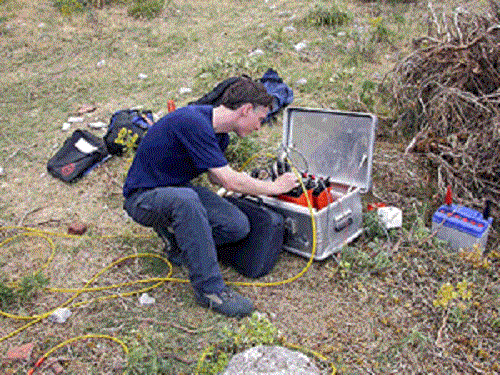Seismology is the investigative
investigation of tremors and the spread of flexible waves through the Earth or
through other planet-like bodies. The field additionally incorporates
investigations of seismic tremor impacts, for example, waves and assorted
seismic sources, for example, volcanic, tectonic, maritime, barometrical, and
simulated procedures, (for example, blasts). A related field that uses
geography to induce data with respect to past tremors is paleoseismology. A
recording of earth movement as a capacity of time is known as a seismogram. A seismologist is a researcher who does
research in seismology.
Insightful enthusiasm toward
quakes can be followed back to vestige. Early theories on the common reasons
for seismic tremors were incorporated in the compositions of Thales of Miletus
(c. 585 BCE), Anaximenes of Miletus (c. 550 BCE), Aristotle (c. 340 BCE) and
Zhang Heng (132 CE).
In 132 CE, Zhang Heng of China's Han
tradition composed the first known seismoscope.
In 1664, Athanasius Kircher
contended that seismic tremors were brought on by the development of flame
inside an arrangement of channels inside the Earth.
In 1703, Martin Lister (1638 to
1712) and Nicolas Lemery (1645 to 1715) suggested that seismic tremors were
brought on by substance blasts inside the earth.
The Lisbon seismic tremor of
1755, concurring with the general blossoming of science in Europe, set in
movement escalated logical endeavors to comprehend the conduct and causation of
tremors. The soonest reactions incorporate work by John Bevis (1757) and John
Michell (1761). Michell confirmed that quakes start inside the Earth and were
waves of development created by "moving masses of rock miles underneath
the surface."
From 1857, Robert Mallet
established the framework of instrumental seismology and completed
seismological examinations utilizing explosives.
In 1897, Emil Wiechert's
hypothetical figurings headed him to infer that the Earth's inside comprises of
a mantle of silicates, encompassing a center of iron.
In 1906 Richard Dixon Oldham
recognized the different landing of P-waves, S-waves and surface waves on
seismograms and discovered the first clear proof that the Earth has a focal core.
In 1910, in the wake of
concentrating on the 1906 San Francisco quake, Harry Fielding Reid set forward
the "versatile bounce back hypothesis" which remains the
establishment for advanced tectonic studies. The improvement of this hypothesis
relied on upon the significant advancement of prior free streams of chip away
at the conduct of flexible materials and in arithmetic.
In 1926, Harold Jeffreys was the
first to claim, taking into account his investigation of tremor waves, that
underneath the covering, the center of the Earth is fluid.
In 1937, Inge Lehmann established
that inside the world's fluid external center there is a strong internal
center.
By the 1960s, earth science had
created to the point where a complete hypothesis of the causation of seismic
occasions had met up in the now
entrenched hypothesis of plate tectonics.

No comments:
Post a Comment